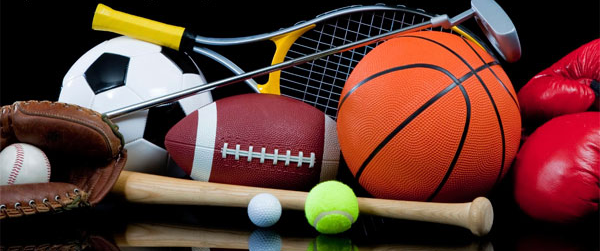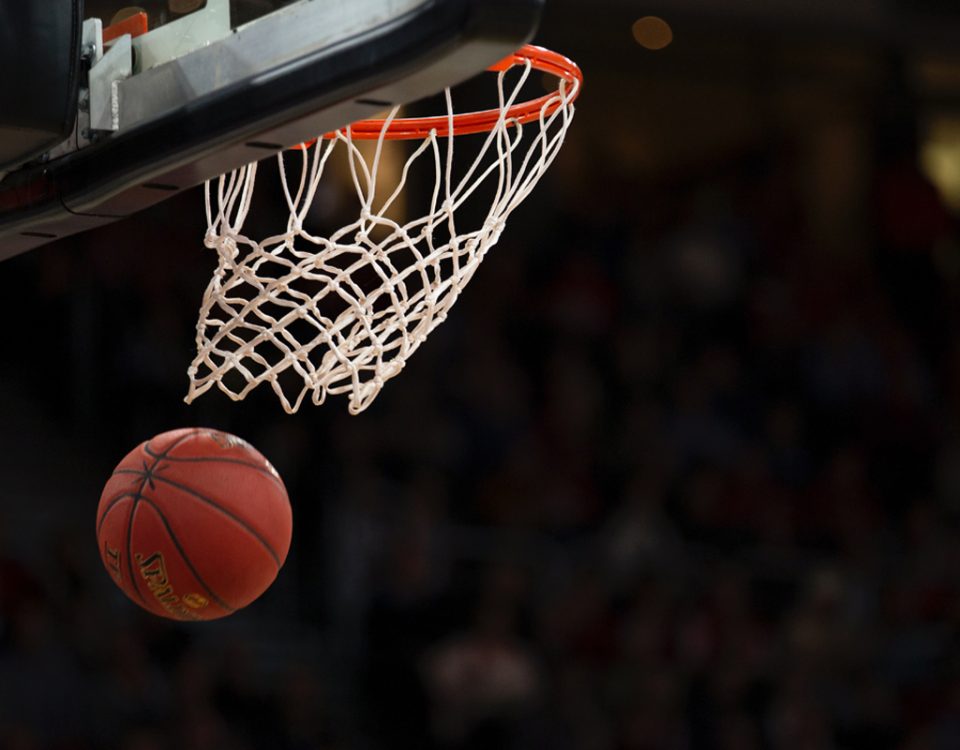
The NCAA Committee on Infractions Has Spoken: University of Akron
August 25, 2021
Traps in NIL Agreements: Watch Out for Perpetual Licenses and Exclusivity
September 14, 2021The NCAA Division I Committee on Infractions (“COI” or “Committee” or “panel”) is an independent administrative body of the NCAA comprised of individuals from the Division I membership and the public. COI decides infractions cases involving member institutions and their staffs. This case involved Texas A&M University (“A&M” or “institution”). A&M, the head men’s basketball coach (“head coach”), assistant men’s basketball coach (“assistant coach 1”), and the NCAA enforcement staff agreed that from April 2019 through June 2020, violations of NCAA legislation occurred in the institution’s men’s basketball program involving (a) noncoaching staff members’ participation in impermissible coaching activities, (b) staff members’ engagement in impermissible recruiting activities, and (c) an assistant men’s basketball coach’s participation with men’s basketball student-athletes in activities that were prohibited due to the COVID-19 pandemic. Further, the parties agreed that the head coach was responsible for select violations because he did not rebut the presumption of responsibility. The parties agreed that this case is Level II-Standard for the institution, head coach, and assistant coach 1. This case was resolved through the negotiated resolution process.
The Committee concluded A&M committed the following violations of NCAA rules:
Violations of NCAA Division I Manual 11.01.7, 11.01.7-(b), 11.7.1, 11.7.1.1, 11.7.1.1-(a), 11.7.3 and 11.7.6 (2018-19 and 2019-20) (Level II)
The institution, head coach, and NCAA enforcement staff agreed that from April 2019 through March 2020, the head coach permitted six (6) noncoaching men’s basketball staff to participate impermissibly in on-court activities and engaged in technical or tactical instruction. The staff members’ impermissible participation and instruction also resulted in the institution exceeding limits on countable coaches by three (3).
The head coach permitted the special assistant to the head men’s basketball coach, who was considered a noncoaching staff member, to provide technical or tactical instruction to the men’s basketball team during film sessions on numerous occasions. NCAA Bylaws 11.7.1, 11.7.1.1, 11.7.1.1-(a), 11.7.3 and 11.7.6 (2018-19 and 2019-20).
The head coach permitted two (2) graduate assistant managers, to provide instruction to the men’s basketball team and participate in more than limited on-court activities during practice. NCAA Bylaws 11.01.7, 11.01.7-(b), 11.7.1, 11.7.1.1-(a), 11.7.3 and 11.7.6 (2018-19 and 2019-20).
The head coach permitted three (3) noncoaching staff members to participate in on-court activities by engaging in drills, providing instruction by demonstrating plays and/or scrimmaging with the student-athletes. NCAA Bylaws 11.7.1, 11.7.1.1, 11.7.1.1-(a), 11.7.3 and 11.7.6 (2018-19 and 2019-20).
Violations of NCAA Division I Manual 11.7.2, 11.7.2-(a), 13.01.1, 13.01.2, 13.02.4, 13.02.5.2, 13.1, 13.1.1.1, 13.1.1.1.2, 13.11.1, 13.11.2.1, 13.11.2.1-(a) and 13.11.2.1-(f) (2019-20)
The institution, head coach, assistant coach 1 and NCAA enforcement staff agreed that between July 2019 and March 2020, the head coach and assistant coach 1 engaged in impermissible recruiting activities with a prospective student-athlete during his 2019-20 junior year of high school.
In July 2019, an evaluation period, the head coach engaged in an impermissible contact with a men’s basketball prospective student-athlete (“prospect 1”) during the July evaluation period. Specifically, while checking into the hotel where prospect 1’s AAU team stayed, prospect 1 approached the head coach in the lobby as the head coach was checking in and the two (2) engaged in a conversation that included the head coach stating that he would be attending prospect 1’s game the next day. NCAA Bylaws 13.01.1, 13.01.2, 13.02.4, 13.02.5.2, 13.1, 13.1.1.1 and 13.1.1.1.2 (2019-20).
During an unofficial visit for top underclassmen in September 2019, assistant coach 1 impermissibly evaluated prospect 1 during an unofficial visit for top underclassmen. Specifically, assistant coach 1 observed prospect 1 and other prospective student-athletes participating in an open gym for approximately 20 minutes. NCAA Bylaws 13.11.1, 13.11.2.1 and 13.11.2.1-(a) (2019-20).
During an unofficial visit from March 8 through 10, 2020, assistant coach 1 conducted two 45-minute impermissible tryouts with prospect 1 in which he used cones and provided tactical and technical instruction. Further, assistant coach 1 arranged for at least one noncoaching staff member with sport-specific responsibilities to participate in the tryouts. NCAA Bylaws 11.7.2, 11.7.2-(a), 13.11.1, 13.11.2.1, 13.11.2.1-(a) and 13.11.2.1-(f) (2019-20).
Violations of NCAA Division I Manual 11.7.1, 11.7.1.1, 11.7.3, 11.7.6, 13.11.1, 13.11.3.8, 17.1.7.2, 17.1.7.2.2, 17.4.6 and 17.4.6.1 (2019-20)
The institution, assistant coach 1, and NCAA enforcement staff agreed that in May and June 2020, assistant coach 1 impermissibly conducted and supervised a tryout and countable athletically related activities when they were prohibited due to the COVID-19 pandemic. Also, assistant coach 1 arranged for several noncoaching staff members with sport-specific responsibilities to supervise and/or participate in the activities exceeding limit on countable coaches.
In May and June 2020, assistant coach 1 conducted and supervised off-campus workouts with a then men’s basketball prospective student-athlete (“prospect 2”) on approximately 24 occasions. The activities, which included shooting drills and scrimmages, constituted impermissible tryouts because prospect 2 had committed to the institution as a transfer but had not yet enrolled at the institution. Further, assistant coach 1 included several men’s basketball student-athletes in many of the workouts even though the activities were prohibited due to the COVID-19 pandemic. NCAA Bylaws 13.11.1, 17.1.7.2.2, 17.4.6 and 17.4.6.1 (2019-20).
On multiple occasions, assistant coach 1 arranged for noncoaching staff members to participate in the May and June on-court activities when they supervised and conducted workouts with prospect 2 and the men’s basketball student-athletes. As a result of their participation in the coaching activities, the institution exceeded the limits on countable coaches by four (4). NCAA Bylaws 11.7.1, 11.7.1.1, 11.7.3 and 11.7.6 (2019-20).
Violations of NCAA Division I Manual 11.1.1.1 (2018-19 and 2019-20)
The institution, head coach, and NCAA enforcement staff agreed that from April 2019 through March 2020, the head coach is presumed responsible for the violations detailed above and did not rebut the presumption of responsibility. Specifically, the head coach did not demonstrate that he promoted an atmosphere for compliance based on his personal involvement in the violations detailed above. In addition, the head coach did not demonstrate that he monitored his staff within the men’s basketball program, which resulted in impermissible recruiting and athletically related activities and violations on coaching restrictions.
Aggravating and Mitigating Factors in accordance with NCAA Bylaws 19.9.3 and 19.9.4.
Aggravating Factors for the Institution
19.9.3-(b): A history of Level I, Level II or major violations by the institution.
19.9.3-(g): Multiple Level II violations by the institution; and
19.9.3-(h): Persons of authority condoned, participated in or negligently disregarded the violation
or related wrongful conduct.
Mitigating Factors for the Institution
19.9.4-(b): Prompt acknowledgement of the violation, acceptance of responsibility and imposition of meaningful corrective measures and/or penalties;
19.9.4-(c): Affirmative steps to expedite final resolution of the matter; and
19.9.4-(d): An established history of self-reporting Level III or secondary violations.
Aggravating Factors for the Head Coach
19.9.3-(g): Multiple Level II violations by the involved individual;
19.9.3-(h): Persons of authority condoned, participated in or negligently disregarded the violation or related wrongful conduct; and
19.9.3-(m): Intentional, willful or blatant disregard for the NCAA constitution and bylaws.
Mitigating Factors for the Head Coach
19.9.4-(b): Prompt acknowledgement of the violation and acceptance of responsibility;
19.9.4-(c): Affirmative steps to expedite final resolution of the matter; and
19.9.4-(h): The absence of prior conclusions of Level I, Level II or major violations by the associate AD.
Aggravating Factors for the Assistant Coach 1
19.9.3-(a): Multiple Level II violations by the involved individual;
19.9.3-(h): Persons of authority condoned, participated in or negligently disregarded the violation or related wrongful conduct; and
19.9.3-(m): Intentional, willful or blatant disregard for the NCAA constitution and bylaws.
Mitigating Factors for the Assistant Coach 1
19.9.4-(b): Prompt acknowledgement of the violation and acceptance of responsibility;
19.9.4-(c): Affirmative steps to expedite final resolution of the matter; and
19.9.4-(h): The absence of prior conclusions of Level I, Level II or major violations by the associate AD.
The Committee penalized A&M as follows:
- Public reprimand and censure.
- Probation: Two years of probation to run consecutive to the probation in Case No. 00928. This will extend the probation period through June 30, 2023.
- Financial Penalty: The institution shall pay a fine of $5,000 to the NCAA.
- Recruiting Restrictions: The institution shall reduce official paid visits for men’s basketball by five during the 2021-22 academic year, plus no unofficial visits for the first three Southeastern Conference games during the 2021-22 academic year. The institution shall have no recruiting communication for three weeks to begin at either the end of the upcoming dead period or the beginning of the fall of 2021 recruiting period. The institution shall restrict the men’s basketball recruiting period 5% during the 2021-22 academic year. This percentage corresponds with seven out of 130 recruiting days during the 2021-22 academic.
- Head coach restriction: The head coach violated head coach responsibility legislation when he did not demonstrate that he promoted an atmosphere for compliance based on his personal involvement in the violations detailed above and did not demonstrate that he monitored his staff, which resulted in impermissible recruiting and athletically related activities and violations on coaching restrictions. NCAA Bylaw 19.9.5.5 and the Figure 19-1 penalty guidelines contemplate head coach suspensions to address head coach responsibility violations. Therefore, any institution that employs the head coach in an athletically related position shall suspend the head coach from first two regular season contests. The provisions of this suspension require that the head coach not be present in the facility where the contests are played and have no contact or communication with men’s basketball coaching staff members or student-athletes during the two contest-suspension period. The prohibition includes all coaching activities for the period of time that begins at 12:01 a.m. on the day of the contest and ends at 11:59 p.m. that day. During that period, the head coach may not participate in any coaching activities including, but not limited to, team travel, practice, video study, recruiting and team meetings. The results of those contests from which the head coach is suspended shall not count toward the head coach’s career coaching record.
For any questions, feel free to contact Christian Dennie at cdennie@bgsfirm.com.
